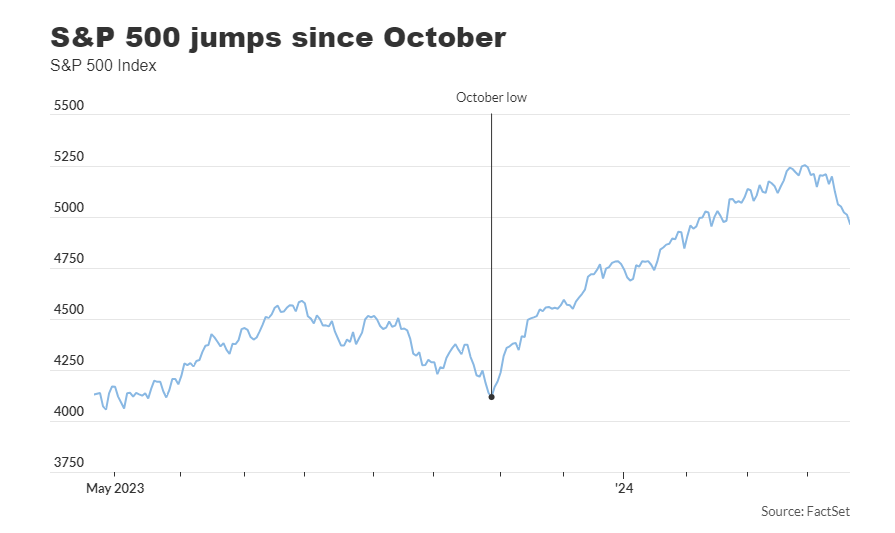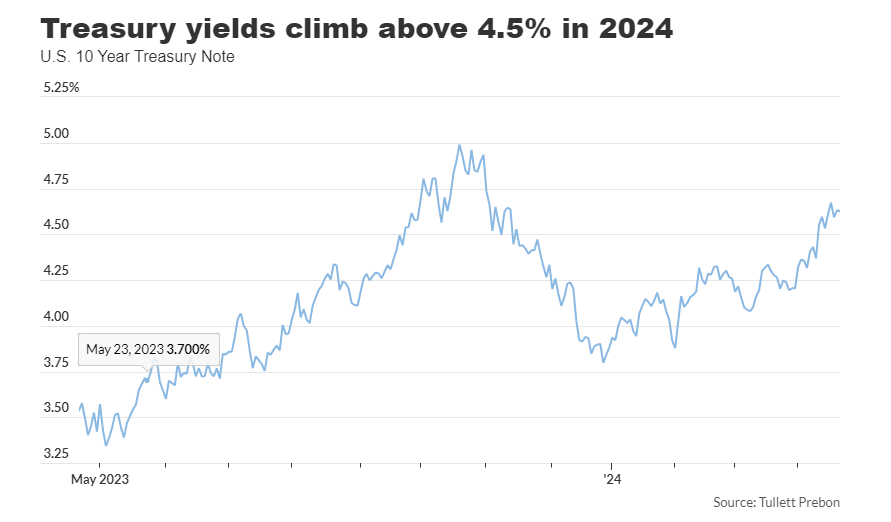Inflation Jitters Shake Markets: S&P 500 Braces for Worst Month in Years
Bob Elliott, Chief Investment Officer at Unlimited Funds, underscores the Federal Reserve’s challenge amid the recent surge in commodity prices. Bond yields have risen sharply this month, reflecting concerns about persistent inflationary pressures amidst a thriving economy. This development marks a notable setback for the prevailing bullish trend in the U.S. stock market.
The S&P 500 is presently witnessing its most significant monthly decline since December 2022, with April’s downturn eroding nearly half of the gains amassed earlier in the year. Despite this setback, the index remains within 5.5% of its record high achieved on March 28.
Elliott observes that while investors accurately assessed the robustness of U.S. economic growth, the challenge lies in the fact that this optimism is already priced into stock valuations. Consequently, bond yields are catching up, leading to market disruptions.

The recent uptick in Treasury bond yields, especially in April, has unsettled U.S. stocks. However, Elliott suggests that these long-term rates may need to ascend further to moderate demand within the economy. Only then will the Federal Reserve feel sufficiently assured that inflation is trending towards its 2% target.
Elliott notes that current financial conditions favor ongoing economic expansion, with robust indicators pointing towards strong first-quarter GDP growth. Despite the Fed’s efforts to curb inflation through monetary tightening, the economy has demonstrated resilience.

Looking ahead, investors await the Bureau of Economic Analysis’ estimation of first-quarter GDP growth, scheduled for release on April 25. Recent data, including low initial jobless claims, indicate a stable labor market and sustained economic growth.
However, concerns linger regarding inflation, driven by the surge in commodity prices. This encompasses notable increases in industrial metals, precious metals, agricultural commodities, and oil. The impact of escalating oil prices on consumer gasoline costs underscores broader economic implications.
Traders in the federal-funds futures market anticipate potential rate cuts by the Fed, albeit with moderated expectations compared to earlier in the year. The prevailing macroeconomic data suggests limited Fed intervention, unless significant disinflationary pressures or adverse labor market conditions emerge.
Despite recent declines, the stock market remains prone to volatility, particularly in the technology sector, as evidenced by the Nasdaq Composite’s prolonged losing streak. Overall, the market landscape underscores a delicate balance between economic growth, inflationary pressures, and monetary policy considerations.




